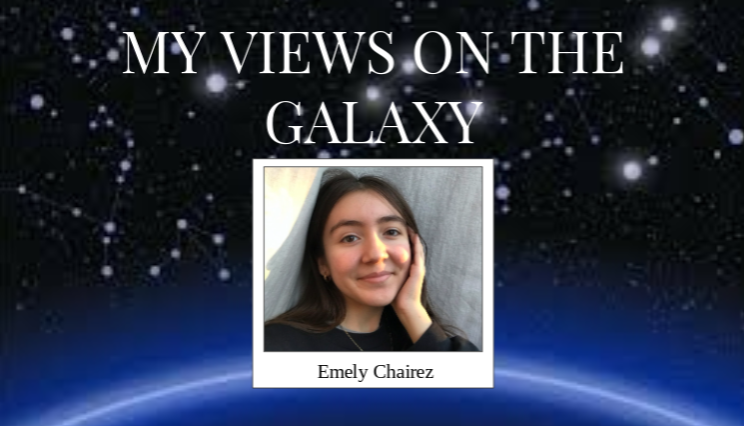The Issues With Disney : Part 1
Oct 22, 2020
I essentially grew up on Disney. I loved watching and singing along to the classics, my favorites being “The Little Mermaid” and “Beauty and the Beast.” As I got older, I delved into Marvel and Star Wars, both companies which are owned by Disney. I love having marathons with my family and friends over both franchises and discussing how we feel about them.
One day, while we were debating whether we were Team Iron Man or Team Cap, the topic of representation came up. We realized there was a significant lack of people of color in any of the Marvel movies. The same can be said for Star Wars and any movies affiliated with Disney. White men and women dominate the screen while people of color are nothing more than a side character if that.
At first, I started writing this opinion paper thinking I would only be discussing the lack of representation for people of color in Disney movies. As I did research, I discovered that there is much more to this. Disney not only lacks representation for people of color, but they also lack representation for the LGBTQ+ community. And when there is representation, it enforces harmful stereotypes or is highly offensive.
The problems with Disney are far too great to discuss in one opinion paper so I have decided to make this a series. The series will be three parts, this part will discuss the lack of representation or harmful representation for people of color.
Now, Marvel has had a Black lead and cast with “Black Panther,” but a solid color cast should not be the only way to get representation. Anthony Mackie, who has starred in seven Marvel films as Falcon, has spoken out about Marvel’s lack of representation. “It really bothered me that I’ve done seven Marvel movies where every producer, every director, every stunt person, every costume designer, every PA, every single person has been white. We’ve had one Black producer; his name was Nate Moore. He produced ‘Black Panther.’ But then when you do ‘Black Panther,’ you have a Black director, Black producer, a Black costume designer, a Black stunt choreographer. And I’m like, that’s more racist than anything else. Because if you only can hire the Black people for the Black movie, are you saying they’re not good enough when you have a mostly white cast?”
I agree with Anthony Mackie and believe that the Black community deserves more representation in all films. Not just the films where there is a solid Black cast, where they are depicted as the villain, or where Black leads transform into animals.
According to a Forbes article, the marvel cinematic universe (MCU), there are 193 characters of narrative importance. Of those, 117 are white actors. That means that the MCU is 61% white. There are only 39 Black actors who make up 20% of the MCU. There are three times as many white actors than there are Black actors. Of those black actors, only 19% are of major importance, only 15 actors in total. And of those actors, 41% belong to “Black Panther,” if you remove them, it only leaves 11% of the black actors being major characters. The next largest group is 8% as multicultural. This includes actors like Vin Diesel, Taika Waititi, and Zendaya. After that are the East Asian actors who make up 5% of total actors, none of which are leads. Following them are Hispanics/Latino, making up 4%. For every 25 actors, there is only one of Hispanic/Latino descent. None of them are leads either. Only two characters are of major importance. Jasper Sitwell, and Luis from Ant-Man. Luis, who has appeared in two films so far, doesn’t quite provide the best representation. For one, his van plays “La Cucaracha” when you honk the horn and he is only used as a comic relief. Not to mention, he is a criminal and has stated that his father has been deported. While Zoe Saldana is of Latin descent, and plays a major role, she doesn’t quite count as representation since she is green throughout her entire performance on screen. And lastly, South Asians make up 0% of leads. There are a total of two actors of Middle Eastern and Arab descent.
This is outrageous.
Marvel has had countless opportunities to bring more diversity to their films. Over the past 12 years, they have made 23 films, and have not made the necessary steps to add diversity to their films.
Disney has constantly given poor representation but they also do little to protect the actors of color. John Boyega, who plays Finn in the Star Wars franchise, recently came out with an article speaking up about how all the people of color in the cast saw significantly less screen time. It was very clear that the writers and directors knew what to do with the white characters, but not those of color. John Boyega talks about his frustration with Disney marketing Black characters as a huge part of the series only to shove them off to the side in the actual film. His character was the only character whose experience was tied to his race.
He received death threats when his casting was announced and countless people threatened to boycott the films simply because he was in them. The racism he experienced was disgusting.
And Disney did nothing to protect him.
However, Disney did do something about the article. They did not directly respond to what Boyega explained in his article for GQ. Instead, they announced when the second season of “The Mandalorian” would be coming out and dropped the trailer. “The Mandalorian” started trending and there was almost zero talk about the article about John Boyega. Is it really that hard to imagine that Disney would release this news to cover up John Boyega’s article? Especially since the news and trailer were dropped out of the blue without any promotion.
Disney had some representation with their animated film “The Princess and the Frog.” The female lead, Tiana, is Black but she gets turned into a frog. The male lead is commonly thought to be Black, but some believe he is actually South Asian. Naveen is an Indian name and his mother is seen wearing a traditional Indian garment. Executives have confirmed that he is not African-American but cannot say what his ethnicity is. They said that his ethnicity was whatever ethnicity was in Maldonia, the fictional country where he is from. Because of this, we do not know what his ethnicity is nor who he is specifically representing. But he doesn’t actually end up representing anyone for very long as he is turned into a frog rather quickly. Tiana is in human form for only 24 minutes while Prince Naveen is only human for nine minutes. That is only a combined 33 minutes of representation.
This is not the only time that Disney has promised representation and then transformed their people of color leads into animals or other entities. Disney has done this a total of six times. The first two being in “The Princess and the Frog” with Prince Naveen and Tiana. In the film “Brother Bear,” the Indigenous lead, Kenai, is transformed into a bear. In “The Emperor’s New Groove,” the Inca lead, Kuzco, is turned into a llama. In “Spies in Disguise,” one of the Black leads, Lance Sterling, gets turned into a pigeon. And finally, in the upcoming movie “Soul,” the Black lead once again gets transformed into a soul-like entity. Due to these several examples of Disney changing their non-white leads, many fans have taken to asking for “representation without transformation.”
It is very clear that Disney prefers to glorify their white leads and push their people of color to the side. John Boyega was marketed to be a lead only to have been used as a side character while the actual leads remained white. In the Frozen 2 trailer we were introduced to a group of mysterious Natives. They were pictured as being a huge part of the plot. In reality, they were not shown much and were saved by the white lead, Elsa. It’s insulting to finally see that someone who looks like you is going to be on the big screen, only to find out they were pushed to the side and used as nothing more than a punchline.
Growing up, my favorite princess was Belle because she had brown hair and so did I. She was my favorite because I thought she looked the most like me. See, I didn’t have a Latina princess that I could look at and relate to. I had to settle for someone with only the same colored hair. It almost felt like people like me weren’t good enough to be on the big screen. It felt like we were unimportant or dispensable. To this day, Disney has not had a Latina princess. And no, Elena of Avalor does not count. She was the Latina princess from a show on Disney Jr. This show was catered solely for extremely small children and was not aired anywhere else. I don’t know about you, but I don’t like to check little kid channels to find entertainment, especially not representation.
Furthermore, the Latino community is not the only group that lacks representation. Disney has yet to give us a South Asian princess. Now they have given us an Indigenous princess with Pocahontas. But the way Disney depicted her was a complete insult to Native American culture. She was historically inaccurate and her entire film not only glamorized colonization, but romanticized it.
They also gave us Indigenous representation in Peter Pan but it was highly offensive. It enforced negative stereotypes and depicted the Natives as savages. They chant, bang drums, and use the “Indian call.” They speak broken English and even use an odd form of sign language to communicate. They also are all drawn as fat, ugly, and some with missing teeth. The Chief has such a large and abstract headdress that he doesn’t even look human. In the film, Captain Hook refers to them as “Redskins” which is a racial slur used against Native Americans. Later, they are all said to be “quite savage,” and “cunning but less intelligent.” Both of these are harmful stereotypes that are still perpetuated today.
Disney has also already given us a Chinese princess with Mulan. Mulan was a beautiful movie even though it was not historically accurate either. The film was based on the Chinese ballad, “The Ballad of Mulan.” In the ballad, Mulan fights in the war for twelve years and her dragon sidekick, Mushu, does not exist. Her love interest, General Shang, does not exist either. In the film, Mulan battles the Huns, but in the ballad she fights against the Rourans. Historians have been able to prove that there was indeed a war between the Northern Wei state and the Rouran state. However, there is no actual proof that Mulan actually existed.
As I mentioned before, Disney has given us a Black princess. But she was a frog for the majority of the film. Disney needs to give us more. We deserve more than one Black, Asian, Latina, and pacific islander princess. They have given us seven white princesses so why not seven black princesses? Why not give us seven Asian princesses?
Put simply, they are racist and have nothing to gain from being not racist. They continue to rack up billions of dollars, so why change? For them, money is the only goal. They will only change once they stop gaining that money, and from the looks of it, that won’t be anytime soon.





